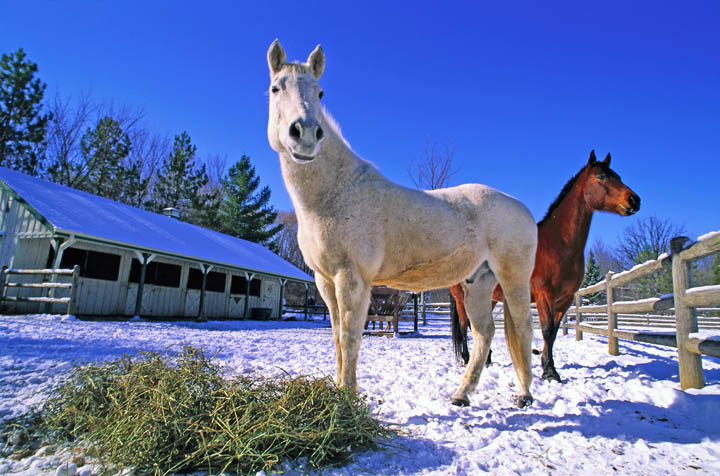November 14, 2012

The long summer drought in Missouri has ruined a large portion of this year’s crop harvest and a University of Missouri equine veterinarian says the negative effects of the dry weather can still be seen across the state. Philip Johnson, a professor of equine medicine and surgery in the MU College of Veterinary Medicine, says he has seen a large spike in the number of Missouri horses infected with Corynebacterium pseudotuberculosis, a bacterial infection that can cause painful swelling, abscesses and inflammation in the legs, chests, and abdominal cavities.
“Under normal conditions, this disease is uncommon in Missouri,” Johnson said. “However, likely because of the extremely dry weather Missouri has experienced in the last six months, we have seen an abnormally large number of cases pop up throughout the state. The disease is contracted through abrasions in the skin, as well as by bites from flies and ticks.”
Johnson says that horse owners should keep a wary eye on their horses for swelling in their chests or swollen abscesses and sores on their legs. He says that infected horses may also show behavioral signs of sickness such as lethargy, depression and loss of appetite. If an infection is left unattended for too long, it could result in horse lameness and even death if the infection moves into internal organs.
“It is very important for horse owners to monitor their horses’ health carefully,” Johnson said. “They should call their veterinarians as soon as they see any potential sign of infection, so that the veterinarians can accurately diagnose the condition. The earlier the infection is detected, the easier and more effective the treatment will be.”
Johnson also recommends that owners quarantine any horses they believe might be infected, as draining abscesses can spread the disease to healthy horses. He says that treatment typically involves draining any abscesses close to the surface of the skin and allowing them to heal. He only recommends the use of antibiotics if the abscesses are deeper under the skin or if the infection has moved to the internal organs of the horse.
You May Also Like




